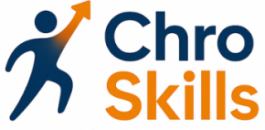
Understanding the Role of a Chief Human Resources Officer
Exploring the Essential Functions of CHROs
In the dynamic world of human resources, the role of a Chief Human Resources Officer (CHRO) is evolving rapidly. This evolution is a response to the changing needs of businesses and the work environment. Understanding the core functions of a CHRO is crucial in shaping a robust personal learning environment that aligns with modern requirements.
A CHRO not only oversees the traditional aspects of human resource management, such as recruitment, training, and benefits administration, but also plays a strategic role in aligning HR initiatives with business goals. This involves a deep engagement in cultivating expertise and ensuring that HR practices support organizational growth and sustainability.
Moreover, the responsibilities of a CHRO extend to fostering a culture of innovation and employee engagement. This requires the use of personalized and data-driven processes to create a learning environment that adapts to individual and organizational needs. In an era marked by digital transformation, CHROs must leverage online platforms and management systems to enhance the employee learning experience.
Creating an effective personal learning environment for CHROs involves embracing both traditional and digital tools to facilitate continuous professional development. By strategically designing a personal learning space, CHROs can access resources relevant to their roles, personalize their learning path, and stay at the forefront of HR leadership.
Key Skills Required for Effective HR Leadership
Mastering the Skills for Effective HR Leadership
A Chief Human Resources Officer (CHRO) must possess a diverse set of skills to navigate the multifaceted landscape of HR leadership. These skills are crucial for promoting a successful learning environment within organizations, enhancing the personal and professional development of employees. This section will delve into the core competencies required to lead dynamically and prepare HR officers to embrace innovative and creative solutions in HR leadership. Gain further insights at embracing innovation and creative solutions in HR leadership.
Strategic and Analytical Thinking
An effective CHRO needs to demonstrate strong strategic and analytical skills. This involves creating visions that align with organizational goals and leveraging tools and resources to analyze data for informed decision-making. The ability to interpret workforce analytics ensures optimized human resource practices and a personalized learning environment that supports growth and innovation.
Communication and Interpersonal Skills
Communication stands as a critical pillar in HR leadership. CHROs must foster open lines of communication and build trust with diverse students or staff levels. Effective communication not only promotes a learning path that resonates with employees but also strengthens the organizational culture, shaping a cooperative learning process that encourages innovation.
Technological Proficiency
In today's digital age, CHROs must embrace technological proficiency. From online courses to digital tools, understanding these technologies enhances a CHRO's capability to facilitate dynamic PLE (personal learning environments). These environments are pivotal in supporting process-based learning where individuals can access resources and control their learning experience autonomously.
Change Management and Adaptability
Change is a constant in the HR field, necessitating adept change management skills. A successful CHRO is adaptable, capable of navigating through evolving trends and guiding the organization through transitions smoothly. This adaptability expands to fostering an educational atmosphere where new training programs and management systems are seamlessly integrated into the learning process, making personalized learning a reality for every employee.
Emotional Intelligence and Empathy
Emotional intelligence forms the cornerstone of building strong workplace relationships. An effective CHRO utilizes empathy to understand employee needs, ultimately crafting a supportive and nurturing learning space. Acknowledging the emotional and personal dimensions of professional learning empowers CHROs to guide their teams effectively.
The roadmap to becoming an effective Chief Human Resources Officer involves mastering these essential skills that empower leaders to drive organizational success through transformative learning environments.
Building a Personal Learning Environment
Creating a Customized Learning Space for HR Leaders
A Chief Human Resources Officer (CHRO) recognizes the importance of having a personalized learning environment to stay ahead in their role. A personal learning environment (PLE) is tailored to cater to the individual's learning path and includes a variety of resources, both traditional and digital.
A PLE provides the flexibility to incorporate various learning tools and methodologies that suit one's professional and educational needs. This approach goes beyond conventional training programs by embracing online courses, social media platforms, and management systems to enrich the learning experience.
To effectively create a PLE, CHROs can start by identifying the specific areas they wish to focus on. This could involve a mix of soft skills, technical expertise, or industry knowledge. Once the areas are determined, they can access resources such as webinars, podcasts, and online courses that align with their professional goals.
An effective personal learning process should also involve regular assessment and adaptation. CHROs can evaluate the success of their learning efforts by measuring improvements in their leadership effectiveness. Relying on a PLE means they have greater control over their learning process, allowing them to personalize it based on feedback and evolving professional demands.
By thoughtfully creating a personalized learning space, CHROs empower themselves to remain agile and responsive in their leadership roles, which is key in navigating the complexities of today's HR landscape.
Leveraging Technology for Continuous Learning
Maximizing Learning Through Technological Advancements
Chief Human Resources Officers (CHROs) have a compelling opportunity to enhance their personal learning environment (PLE) by leveraging the array of digital tools available today. The integration of technology in this process is not merely a convenience; it cultivates a space for continuous and personalized learning that is essential for effective leadership. Incorporating online-based learning resources into your learning strategy is essential. These tools range from online courses offered by globally recognized educational platforms to webinars and podcasts that provide insights into the latest HR trends and practices. By tapping into these resources, CHROs can obtain diverse learning experiences that complement traditional learning methods, ultimately enriching their professional journey. Furthermore, utilizing digital tools like management systems and learning management platforms can help you create a customized learning path. These platforms provide control over your learning process, allowing you to personalize your education experience based on your specific career goals and areas of interest. Social media platforms also serve as a valuable component of the learning ple. By actively engaging with professional communities and HR forums, CHROs can access resources and insights that are shared by industry peers, broadening their understanding of effective HR practices. Ultimately, creating a dynamic and adaptive personal learning environment requires a blend of traditional education and innovative tools. Whether you are a seasoned CHRO or a student of HR leadership, embracing technology in your learning process will foster an environment that supports continuous growth and professional efficacy.Networking and Mentorship as Learning Tools
Harnessing the Power of Connections
In the evolving landscape of human resources, networking and mentorship have become indispensable tools for those seeking to excel as chief human resources officers. These elements serve as a bridge between traditional and modern learning methodologies, enhancing the overall learning experience. Building a robust professional network offers a wealth of resources and insights that are crucial for effective HR leadership. By engaging with a diverse range of professionals, individuals gain access to new perspectives and experiences that can significantly enrich their personal learning environment. Social media platforms, professional associations, and industry conferences are valuable venues to create a learning space where up-to-date educational resources and industry best practices are shared. Networking is not just about expanding one's contact list; it’s about fostering mutually beneficial relationships that promote continuous learning and development. Through these connections, chief human resources officers can enhance their learning path, access resources that may not be available in traditional settings, and stay informed about the latest trends in HR management systems. Mentorship, on the other hand, offers a more personalized learning journey. Engaging with mentors enables HR leaders to receive tailored guidance and feedback, based on their specific needs and career goals. This personalized learning approach transforms the learning environment into a more dynamic and effective experience. By participating in a structured mentorship program, HR professionals can refine their skills, control learning outcomes, and align their learning process with personal and organizational objectives. Both networking and mentorship not only foster the development of professional skills but also facilitate the exchange of innovative ideas and best practices. They create dynamic learning environments that adapt to the individual needs of the students, thereby enhancing the learning process. By leveraging these tools, chief human resources officers can ensure they remain at the forefront of the industry, equipped with the knowledge and resources necessary to lead effectively. In conclusion, cultivating strong networks and seeking mentorship opportunities are critical steps in creating a vibrant personal learning environment. These elements help HR leaders access a variety of educational resources and training opportunities, thus enriching their professional development journey and ensuring continuous learning in an ever-changing HR landscape.Measuring the Impact of a Personal Learning Environment
Evaluating the Effectiveness of a Customized Learning Space
Creating a personalized learning environment (PLE) is just one step in an ongoing professional journey. The true measure of success lies in evaluating the effectiveness of these educational tools and practices within your professional development plan. One key approach is to treat yourself as a student within this digital learning environment. Embrace a mindset that constantly seeks to measure the impact of your learning experiences and tools, just as traditional educational institutions assess student progress.- Assess Your Learning Path: Regularly review the learning path you’ve established based on online courses, training sessions, and educational resources. Determine whether these elements are contributing to your growth as a chief HR officer or if adjustments are needed.
- Monitor Engagement and Progress: Utilize digital tools and management systems to keep track of your personal development. Analyze engagement metrics from social media or any other online platform you use for professional growth. It’s crucial to ensure that the process of accessing resources and the learning space provided is effective.
- Feedback Loop: Implement feedback mechanisms that allow for the continuous improvement of your PLE. This process includes evaluating the relevance and efficiency of the resources accessed and adjusting your approach based on feedback.
- Outcome Measurement: Finally, evaluate whether the PLE has been instrumental in achieving your professional goals. Consider metrics such as improved work performance, effective decision-making, and the ability to implement personalized strategies that reflect your enhanced competencies.













